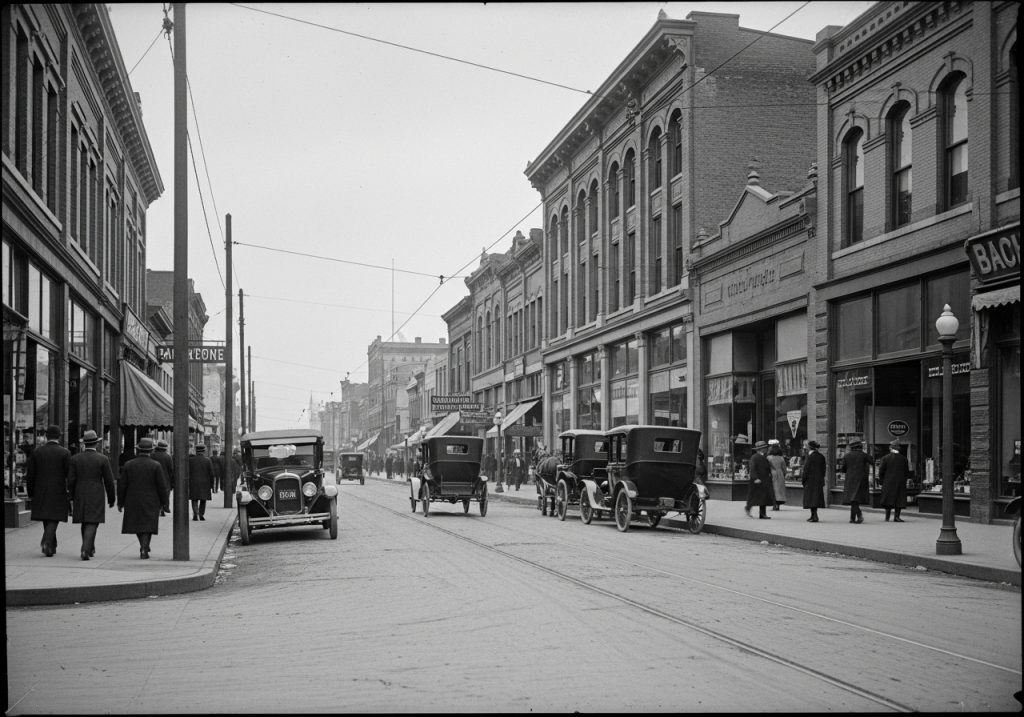
Oklahoma City, the capital and largest city of the state of Oklahoma, has a rich history steeped in the cultures of Native American tribes and shaped by waves of settlers, oil booms, and political change. Before it became a bustling metropolis, the area that would become Oklahoma City was part of the Unassigned Lands—territory that had been taken from Native American tribes and not yet assigned to settlers or new tribal nations. Various tribes including the Apache, Caddo, Wichita, and eventually the Five Civilized Tribes—Cherokee, Choctaw, Chickasaw, Creek, and Seminole—inhabited the area and shaped its early history.
In the 19th century, the U.S. government relocated several Native American tribes to this region through the infamous Trail of Tears, creating what was known as Indian Territory. The land around present-day Oklahoma City remained largely unsettled by non-Native peoples until the Land Run of April 22, 1889. This event marked a pivotal moment in Oklahoma City’s history, as more than 10,000 people staked claims to land in what would become the city, effectively creating a bustling tent city overnight.
The Land Run of 1889 was a chaotic yet significant milestone, giving birth to Oklahoma City. Settlers rushed into the area to claim land, and by the end of the day, a city was emerging with makeshift homes, businesses, and governance. The settlement grew rapidly, incorporating as a city in July 1890, just months after its founding. Its central location and flat terrain made it an ideal spot for the Atchison, Topeka and Santa Fe Railway, further boosting economic and population growth.
In its early years, Oklahoma City developed a frontier economy with farming, livestock, and commerce as major pillars. The city’s architecture began to evolve with red-brick buildings and a classic Western aesthetic. Schools, churches, and local businesses followed, transforming the city from a wild outpost to a growing urban center. When Oklahoma became a state in 1907, Oklahoma City was already a significant player and soon replaced Guthrie as the state capital in 1910.
One of the most transformative events in Oklahoma City’s history came in 1928 when oil was discovered within city limits. The discovery turned the city into a magnet for wealth and investment, launching it into an era of unprecedented growth. Oil derricks dotted the skyline—even on the state capitol grounds—and Oklahoma City became a symbol of prosperity during the Great Depression, offering jobs and economic stability while much of the nation struggled.
During World War II, the city supported the war effort through manufacturing and military training installations. Tinker Air Force Base, established in 1941 just southeast of the city, became a crucial hub and remains one of the largest military employers in the region. The post-war era saw a boom in suburban development, along with improvements in transportation and public infrastructure, setting the stage for the modern city.
By the 1980s, like many American cities, Oklahoma City faced urban decline, economic stagnation, and a deteriorating downtown. In response, city leaders launched the Metropolitan Area Projects (MAPS) in the 1990s—a series of public-private initiatives designed to revitalize the urban core through new sports arenas, parks, and cultural institutions. These efforts redefined Oklahoma City’s identity and triggered a renaissance in urban living.
The 1995 bombing of the Alfred P. Murrah Federal Building was a somber turning point in the city’s history. The domestic terrorist attack claimed 168 lives and left a permanent scar on the community. The Oklahoma City National Memorial now stands as a tribute to the victims and a symbol of the city’s resilience and unity.
Today, Oklahoma City is a vibrant metropolis with a diversified economy that includes energy, aviation, health care, and technology. It maintains its cowboy roots while embracing modernity, with thriving arts districts, a growing culinary scene, and a renewed sense of civic pride. The city continues to grow and evolve, honoring its complex past while looking toward a progressive and inclusive future.